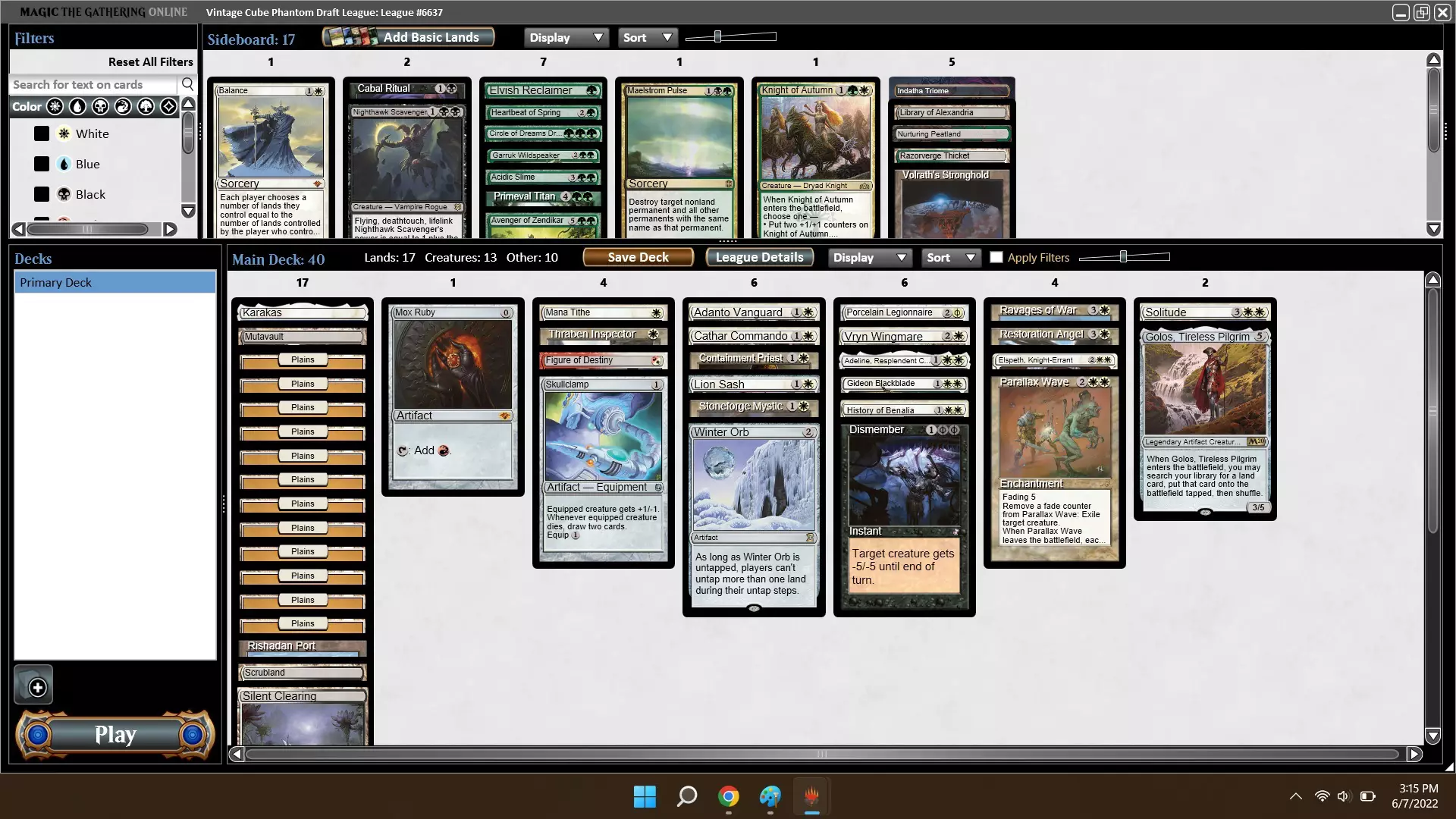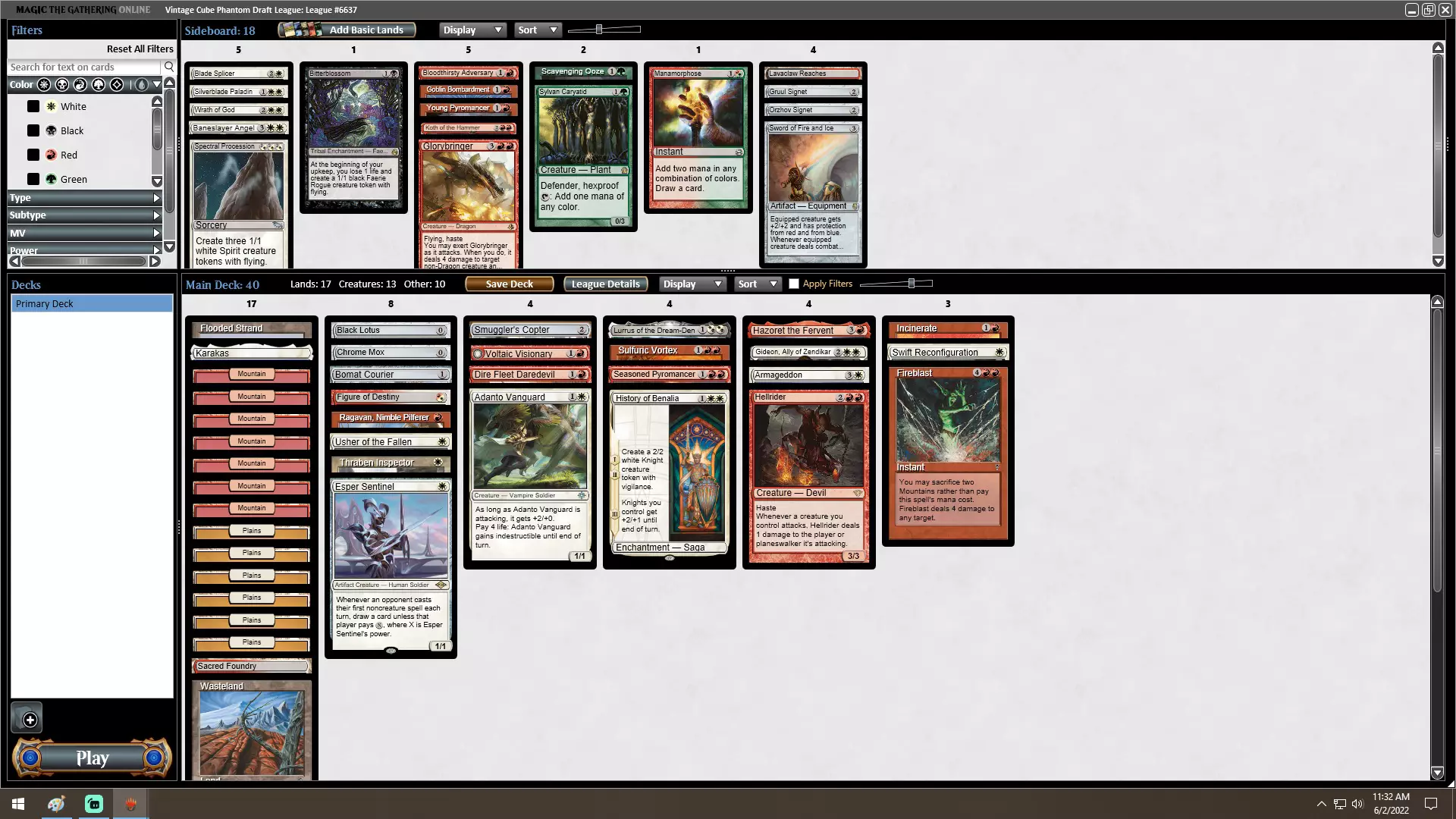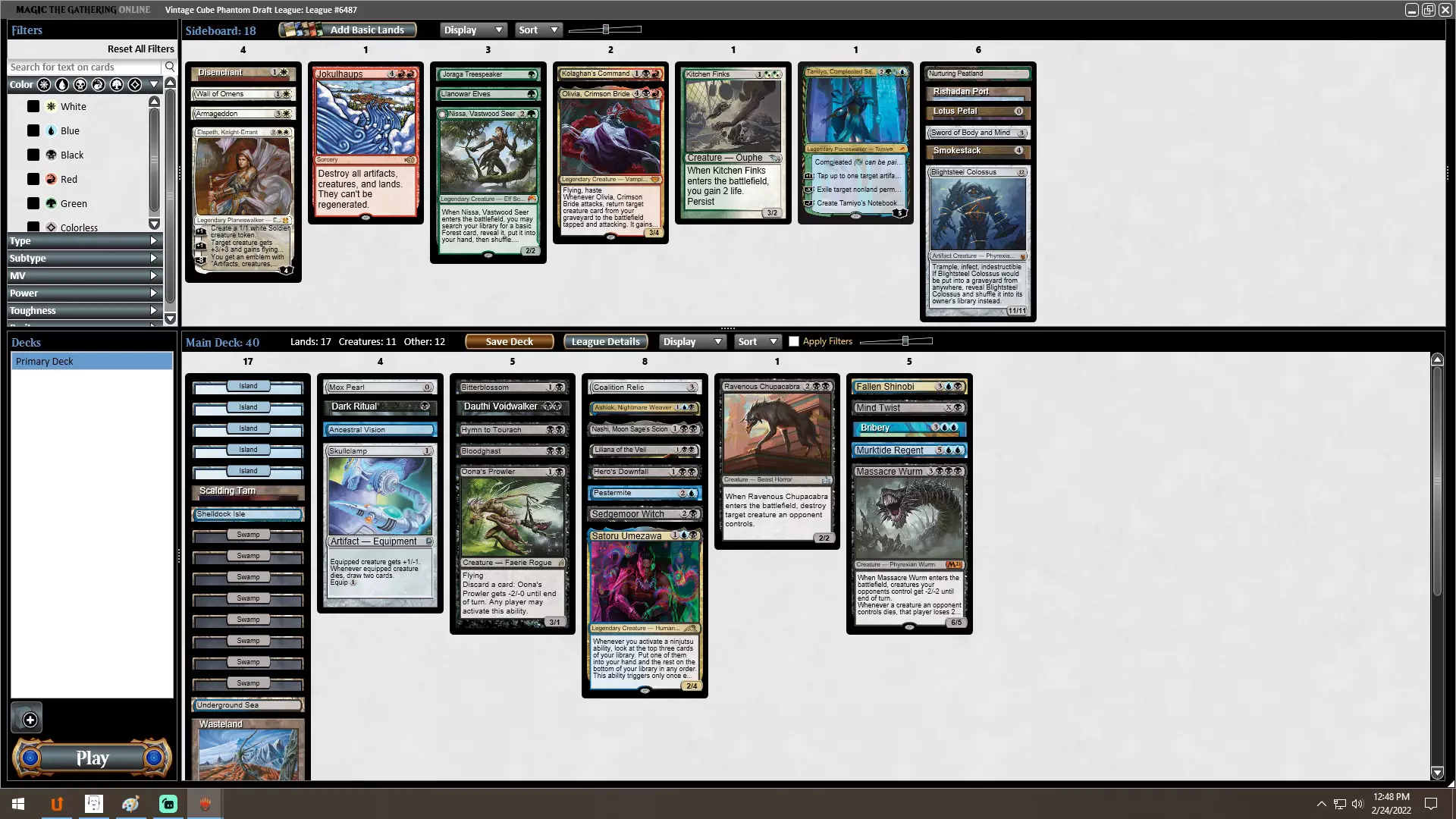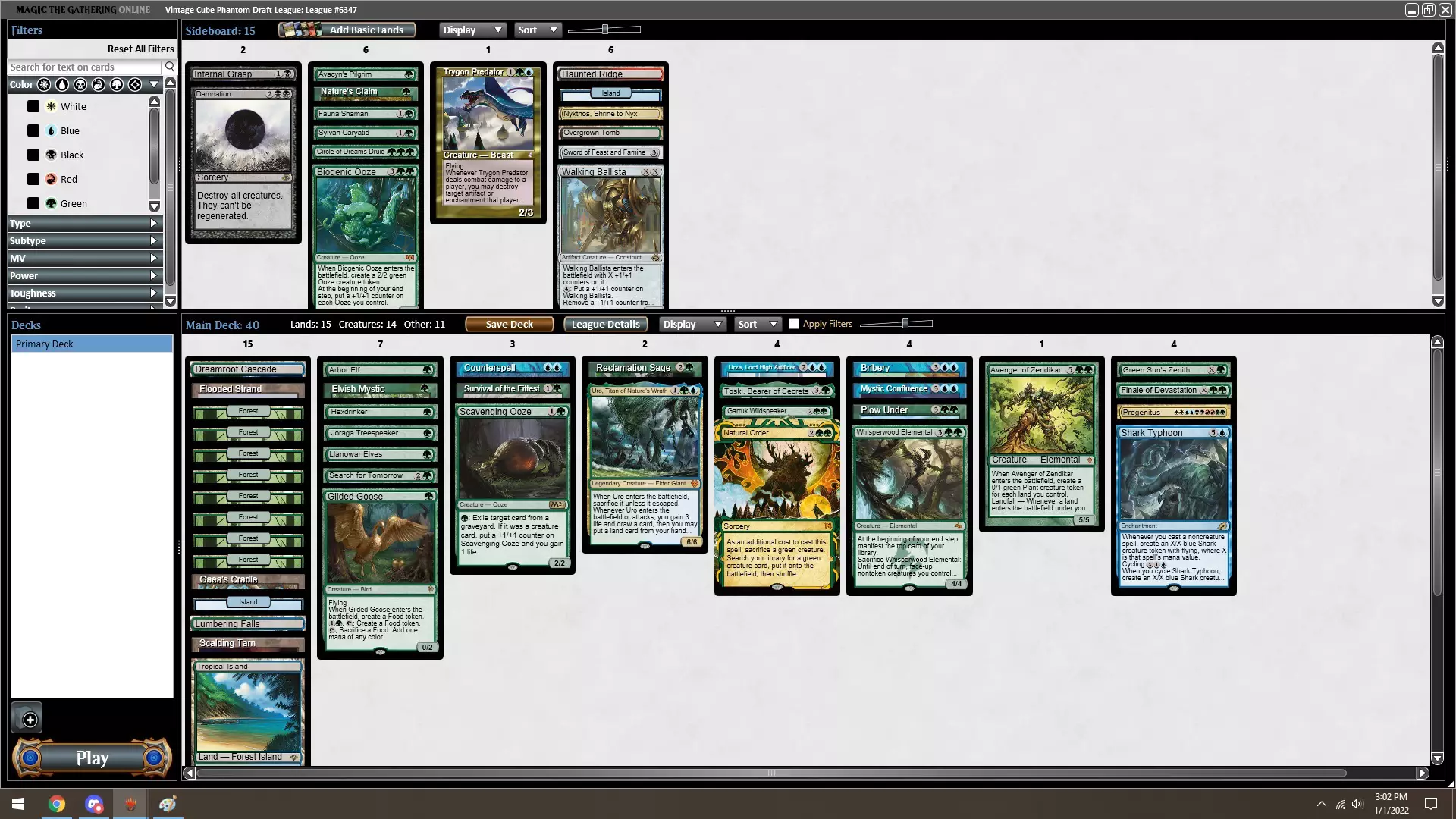Loading...
Products
Magic: The Gathering Line
The first thing to note is that Vintage Cube Draft is challenging. This is particularly true if you’re a newer player who might be experiencing many of the cards for the first time. Not only do you have to learn a bunch of new cards, but you have to navigate draft and gameplay situations where all of these cards (which come from different sets and eras) are interacting with one another in unfamiliar ways.
Because it’s a singleton format, no two games will ever be the same. For all of these reasons, I find that Cube Draft is a great way to train your overall MTG skills. You need to process a lot of information quickly, without leaning on pattern recognition like you might with a Constructed deck.
All of that said, you shouldn’t be intimidated! This challenge is part of the fun, and it’s important to start somewhere.
My best piece of advice for drafting a Cube deck is that you should have a vision for how you want your deck to turn out. Construct a clear plan for winning the game, and view the whole deck as greater than the sum of the individual cards. Power ranking the cards in a Cube is fun (and I do a lot of it myself), but following a pick order won’t result in a good deck. Instead, you need to view things in context, with an eye for synergy and mana curve.
Here’s an important example of how context can change things:
Vintage Cube Draft - even more so than other Cubes - is driven by fast mana. Keep an eye on the mana capabilities of the deck you’re drafting, and adjust your card evaluations accordingly.
For a normal deck, you should prioritize cards that are cheap or free. Costing one mana is a big difference from costing two. Personally, I don’t mind starting my draft with a one-drop green mana dork if my opening pack doesn’t have a standout card. However, two-drop accelerants like Sylvan Caryatid and Sakura-Tribe Elder are average cards, and represent much lower picks.
On the other hand, if you’re lucky enough to start your draft with a Mox, then you should pick up some cards that cost two or three mana, and which are particularly punishing when played ahead of schedule.
Sol Ring, Mana Crypt and Black Lotus are uniquely good for giving you quick bursts of mana.
When you have these cards, you just need any proactive threat that you can leverage. I wouldn’t normally consider Hero of Bladehold to be a top card in Vintage Cube, but it’s a great way to convert your fast mana into a fast win.
Some games of Cube Draft are determined by who resolves the single most powerful spell. If you draft cards like Channel, Grim Monolith or Thran Dynamo, then the sky’s the limit for what you can do.
Allow me to share a few successful decks that I’ve had, with some short commentary on each.

Staying monocolor is nice for a few reasons. You increase your consistency, get to play with colorless value lands like Mutavault and Rishadan Port and don’t have to waste draft picks on dual lands!
I started with pack one pick one Mox Ruby, and used that to power out hard-hitting threats which cost two and three mana. The goal was to get out ahead, and use Winter Orb and Ravages of War to stay ahead. Cards like these can effectively “freeze” the gamestate by preventing players from casting more spells. So if you can freeze things while in a winning position, the game is likely to go well for you!

This deck was less desirable due to being two colors, but more desirable due to having a lower mana curve. Having lots of one-mana cards is a very good thing for an aggressive deck.

Once again, this deck has a Mox and lots of cards that cost two and three mana. However, instead of being purely aggressive, this is a midrange deck with threats that create snowballing advantages. Highlights include Bitterblossom, Ashiok, Nightmare Weaver and Fallen Shinobi.

Green is one of my personal favorite colors in Cube Draft. While you can’t always get a Mox or a Black Lotus, you can simulate the effect by picking one-drop green mana accelerants. This deck has a full six of them, which allowed me to quickly cast game-winning threats like Natural Order and Bribery.
Note the low land count (15), since playing 17 or 18 lands could result in flooding with all of the extra mana sources. Decks like this actually want to skip past the two and three spots on the mana curve and focus on single threats that can dominate the game all on their own.
I hope this inspires you to give Vintage Cube Draft a try! I guarantee it will be a memorable experience!